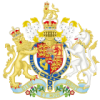Soho
Soho is an area in the West End of London. The area had been made a royal park by King Henry VIII, and from the seventeenth century fashionable houses were built in the area for the aristocracy, but these aristocratic residents moved away to other areas of the West End in the eighteenth century. The neighbourhood was badly affected by an outbreak of cholera in 1854. Dr. John Snow identified the public pump on Broad Street (now Broadwick Street) as the source of the epidemic in the neighborhood.
Coordinates
Latitude: 51.513888075248
Longitude: -0.135067104857
Longitude: -0.135067104857

